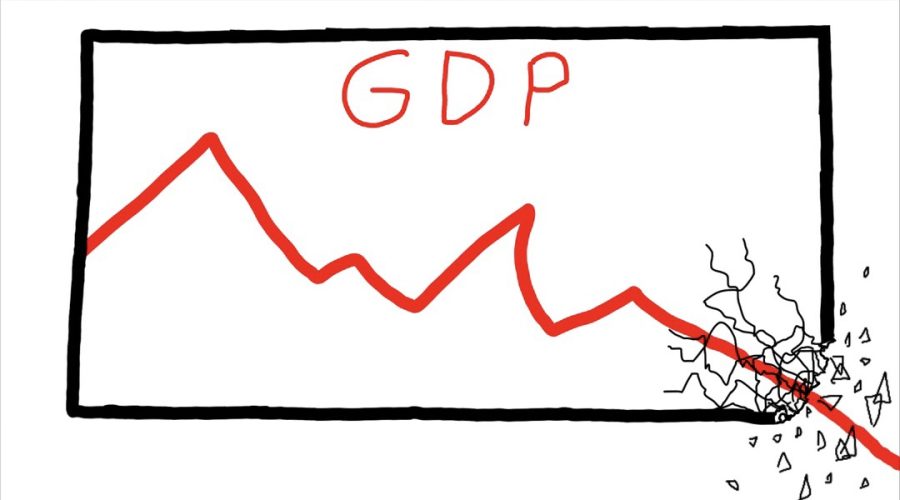Op-ED: Are We in a Recession?
November 3, 2022
The popular definition of a recession is a period of economic downturn and generally classified by a fall in GDP for two consecutive quarters. This definition is what was used to define the 2008 Great Recession. Thus, using synonymous logic, numbers indicate the United States is currently in a recession, notwithstanding confused sentiments from media and others in recent months.
On August 25, 2022, the Bureau of Economic Analysis (BEA) reported a second consecutive quarter of GDP contraction at a 0.6 percent decline. This follows a similar report released on June 29, 2022, which notes a year-on-year decrease of 1.6 percent. This then indicates two quarters of negative GDP growth.
So, if the United States’ recent GDP performance signifies a recession, why are media outlets and the White House refusing to acknowledge it as one? The answer, simply, is that the official definition of a recession is still debated.
According to Forbes Magazine, “The National Bureau of Economic Research (NBER) is generally recognized as the authority that defines the starting and ending dates of U.S. recessions. They define it as ‘a significant decline in economic activity spread across the economy, lasting more than a few months, normally visible in real GDP, real income, employment, industrial production, and wholesale-retail sales.’”
The most common argument made by the White House and left-wing economists looks to the unemployment rates and other economic factors as the reason they do not recognize the economy as being in recession. Their reasoning states that since the unemployment rate is low, the economy must not be in a recession. Although the unemployment rate is low, these statistics are misleading. According to the Bureau of Labor Statistics (BLS), the unemployment rate in January of 2022 was 4.0%, while the current unemployment in September of 2022 is 3.5%. Similarly, the unemployment rate from February of 2020- the month before the pandemic began- was 3.5%, meaning that the current unemployment rate has only now matched pre-pandemic levels. The unemployment rate, however, isn’t a major issue when compared to other, more concerning statistics.
One of these factors is the inflation rate. The Consumer Price Index (CPI) rose 8.3 percent in the month of August and 8.2 percent in September, year-over-year. This sky-high inflation rate continues to lower the value of the dollar. The Treasury Yield Curve (10 year/2 year spread) fell 0.40 percent as of October 7. When short-term interest rates yield more than longer term interest rates, it’s called an inverted yield curve. An inverted yield curve is typically a tell-tale sign of an impending recession, and the yield has been inverted since the month of July. In the stock market, the S&P 500 index has fallen 23 percent year to date as of October 7. In the housing market, purchases are down due to increased borrowing costs on mortgages and high prices. The NAHB home builders index fell 3 points in September to 46, signaling that most builders view the housing market as poor. Even if this data doesn’t convince you that we are in a recession, we are at the very least dangerously close to one.
In August, the Conference Board Leading Indicators (CBLI) leading index dropped by 0.3 percent, being the sixth consecutive monthly decline. This development is one of the prime indications that the economy may be in a recession, or headed for one soon. Two Wells Fargo Analysts weighed in in a recent report, saying, “We don’t yet think broad economic conditions are consistent with recession, but activity is slowing, and the trend decline in the index supports our view that the economy may slip into a recession by the beginning of next year.”
Although some people may disagree, it is clear that the recent economic performance of the United States signifies a recession.


